Raised bed garden design is the perfect way to cultivate a thriving garden with style and ease. These elevated plots not only provide better drainage and soil quality but also make gardening more accessible and enjoyable. Whether you’re looking to grow vegetables, herbs, or flowers, these beds can be customized to fit any space and preference, turning your outdoor area into a productive haven.
Incorporating Vertical Gardening Techniques
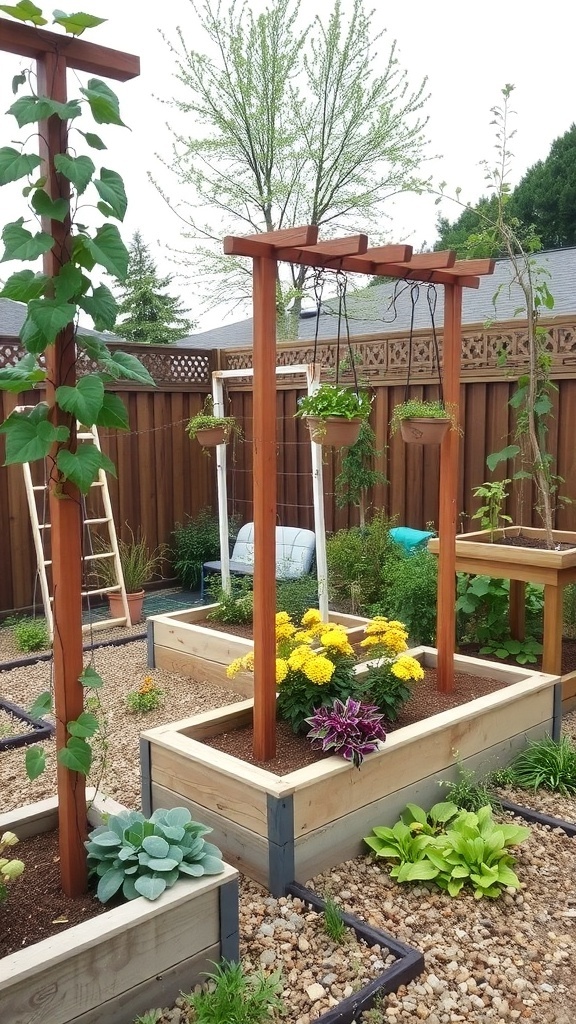
Vertical gardening is a fantastic way to maximize space in your raised bed garden. The image shows a well-designed garden featuring vertical structures that support climbing plants. These structures not only save ground space but also add visual interest.
In the image, you can see sturdy wooden posts that serve as trellises. They support climbing plants like beans or peas, allowing them to grow upwards. This technique helps keep the plants healthy by improving air circulation and reducing the risk of pests.
Hanging pots are another great addition. They provide extra space for herbs or flowers, making the garden more vibrant. The colorful blooms and lush greens create a lively atmosphere, making gardening enjoyable.
Using vertical gardening techniques can also make harvesting easier. You won’t have to bend down as much to reach your crops. Plus, it adds a unique touch to your garden design, making it stand out.
Optimal Dimensions for Raised Beds
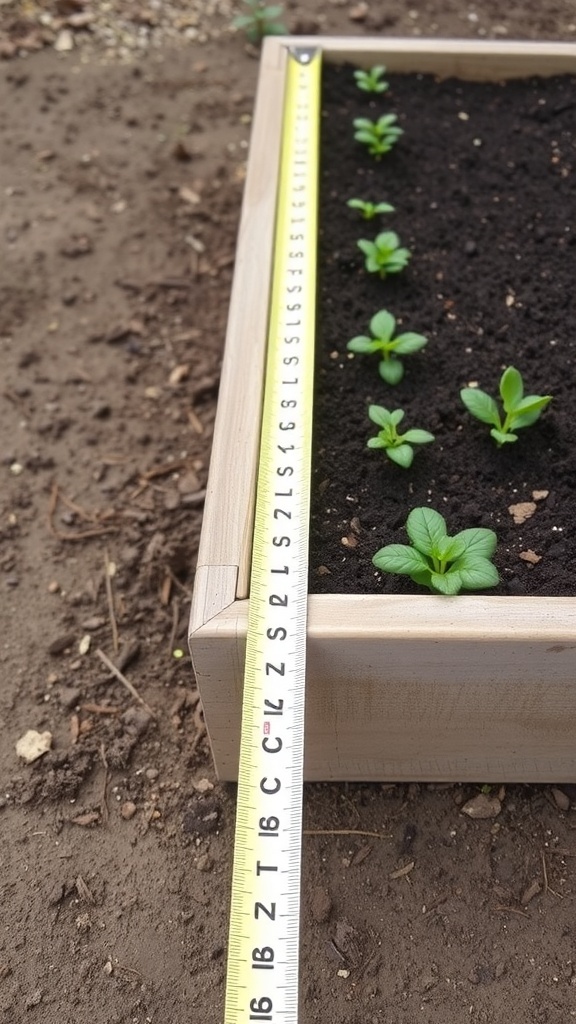
When planning your raised bed garden, the dimensions matter a lot. The image shows a measuring tape next to a raised bed filled with young plants. This gives a clear idea of how to measure your garden space effectively.
For most gardeners, a width of 4 feet is ideal. This allows easy access from both sides without stepping into the bed. The length can vary, but 6 to 8 feet is common. This size provides enough room for a variety of plants while keeping maintenance manageable.
The height of the bed is also important. A height of 12 to 24 inches is often recommended. This depth supports healthy root growth and makes it easier to tend to your plants.
Spacing is key too. The image shows seedlings planted in neat rows, which helps maximize space and ensures each plant gets enough sunlight and nutrients. Keeping plants spaced properly can lead to a thriving garden.
Irrigation Solutions for Raised Beds
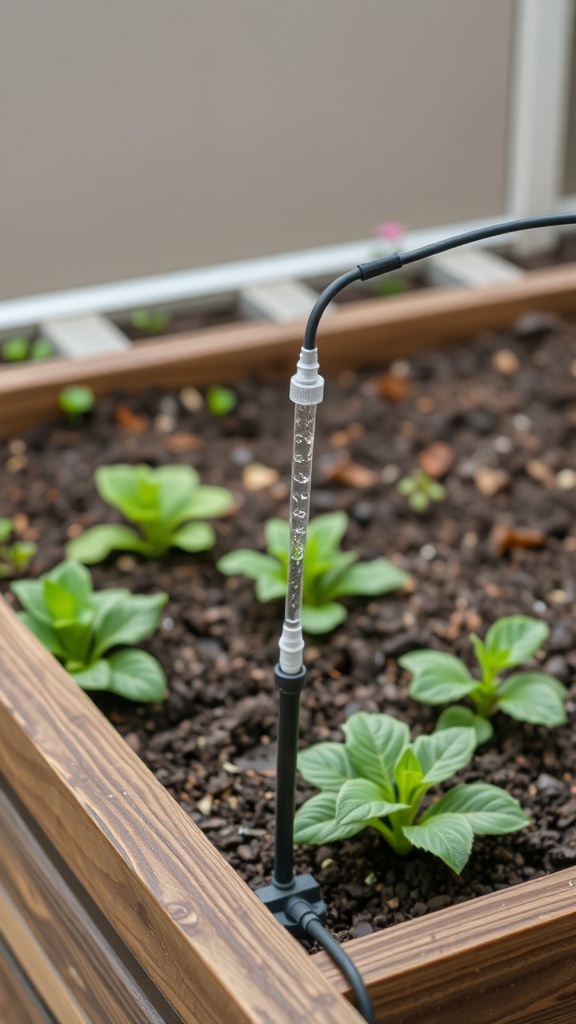
When it comes to raised bed gardening, keeping your plants hydrated is key. The image shows a simple yet effective irrigation system that can make watering a breeze. This setup features a clear tube connected to a water source, allowing for precise watering directly at the roots.
Using a drip irrigation system like this one is a smart choice. It delivers water slowly and evenly, reducing waste and ensuring that your plants get the moisture they need. This method is especially beneficial for raised beds, where soil can dry out faster than in-ground gardens.
Another great aspect of this system is its visibility. The clear tube lets you see the water flow, so you know exactly when your plants are getting their drink. Plus, it’s easy to set up and can be adjusted to fit various bed sizes.
For those who want to take it a step further, consider adding a timer. This way, you can automate your watering schedule, making it even easier to maintain your garden. With the right irrigation solution, your raised bed garden can thrive with minimal effort!
Soil Composition for Healthy Plants
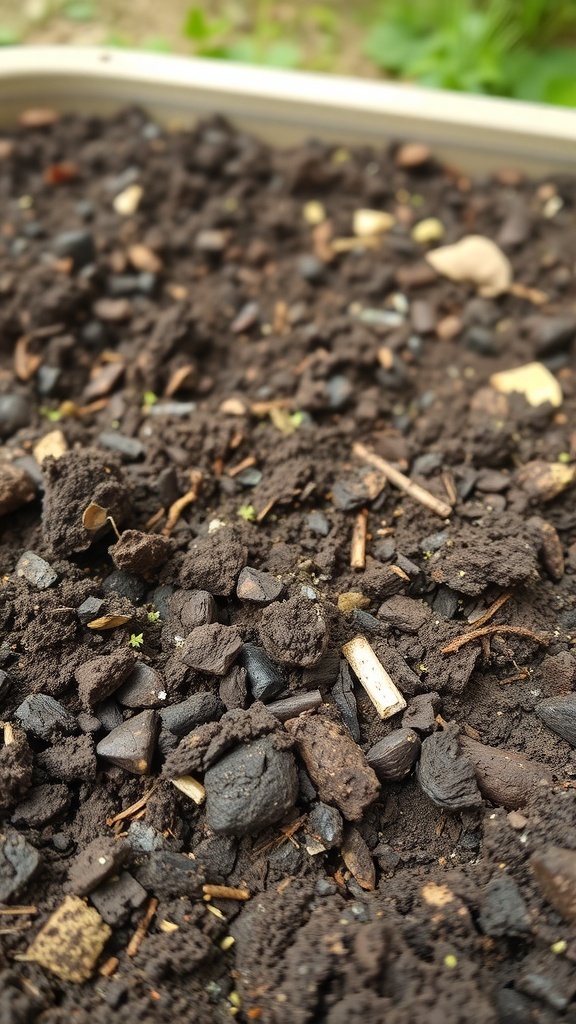
Healthy plants start with good soil. The image shows a close-up of rich, dark soil, which is a great sign. This type of soil is often packed with nutrients and organic matter, essential for plant growth.
In raised bed gardening, the soil composition is key. A mix of topsoil, compost, and other organic materials can create an ideal environment. The compost adds nutrients, while the topsoil provides structure.
Notice the small bits of organic matter in the soil. These pieces help retain moisture and improve drainage. A well-balanced soil mix can prevent issues like root rot and nutrient deficiencies.
When planning your raised bed, think about what plants you want to grow. Different plants may need different soil types. For example, root vegetables like carrots thrive in loose, sandy soil, while leafy greens prefer a more nutrient-rich mix.
Don’t forget to test your soil! Testing can reveal pH levels and nutrient content. This way, you can adjust your soil mix to meet the needs of your plants. Happy gardening!
Companion Planting in Raised Beds
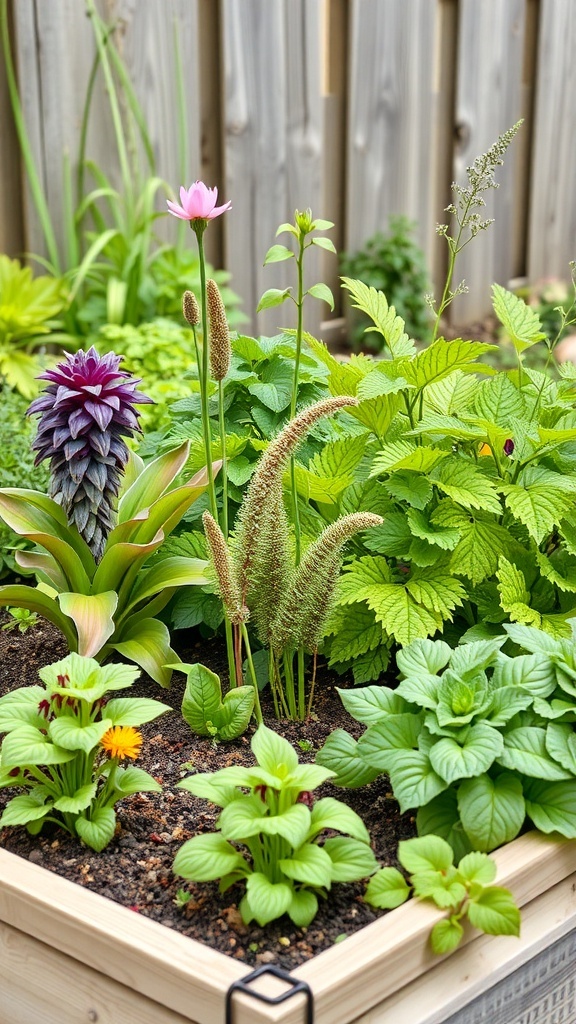
Companion planting is a fantastic way to make the most of your raised bed garden. The image shows a vibrant mix of plants, each playing a role in supporting one another. For instance, the colorful flowers attract pollinators, while the leafy greens provide shade and moisture to the soil.
In this setup, you can see how different plants coexist harmoniously. The tall, spiky plants might help deter pests, while the low-growing varieties can suppress weeds. This natural synergy not only boosts plant health but also enhances your garden’s overall productivity.
When planning your raised bed, think about the relationships between plants. Some combinations can improve growth and flavor. For example, pairing tomatoes with basil can enhance the taste of both. This method makes gardening more efficient and enjoyable.
Using companion planting in raised beds is not just practical; it’s also visually appealing. The mix of colors and textures creates a lively garden space. So, as you design your raised bed, consider how different plants can work together to create a thriving ecosystem.
Choosing the Right Location for Your Raised Bed
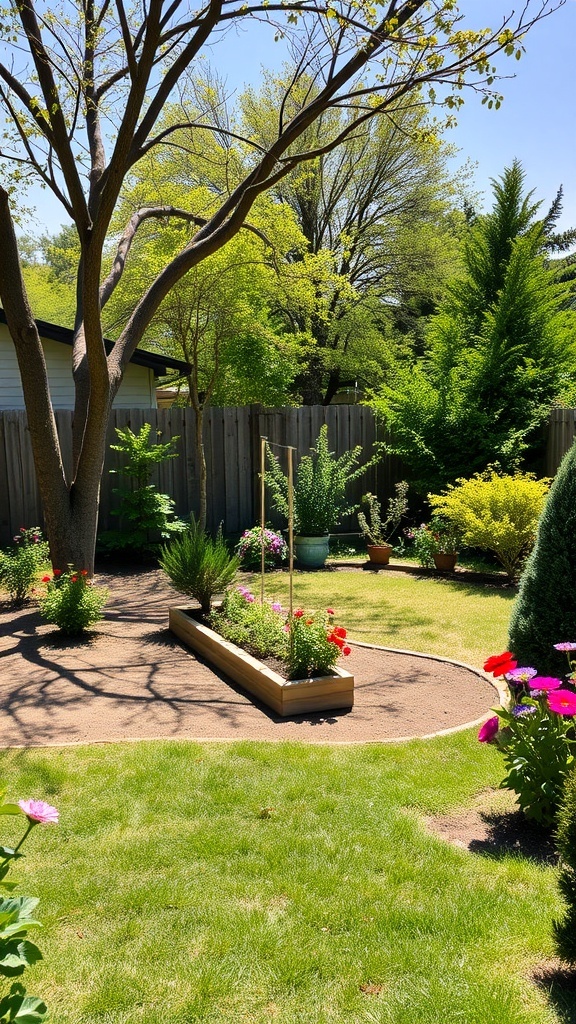
Finding the perfect spot for your raised bed garden is key to a thriving garden. The image shows a lovely raised bed surrounded by vibrant flowers and greenery, which highlights how a well-placed garden can enhance your outdoor space.
Start by looking for a location that gets plenty of sunlight. Most vegetables and herbs need at least six hours of direct sunlight each day. In the image, the raised bed is positioned in a sunny area, which is ideal for growth.
Next, consider accessibility. You want to make sure you can easily reach your plants for watering, weeding, and harvesting. The raised bed in the image is centrally located, making it easy to tend to.
Also, think about the drainage. A spot that retains too much water can lead to root rot. The raised bed here is set on well-drained soil, which is essential for healthy plants.
Lastly, keep in mind the proximity to water sources. Having a hose or watering can nearby will make your gardening tasks much easier. This garden setup looks inviting and practical, making it a great example of how to choose the right location for your raised bed.
Designing for Accessibility in Raised Beds
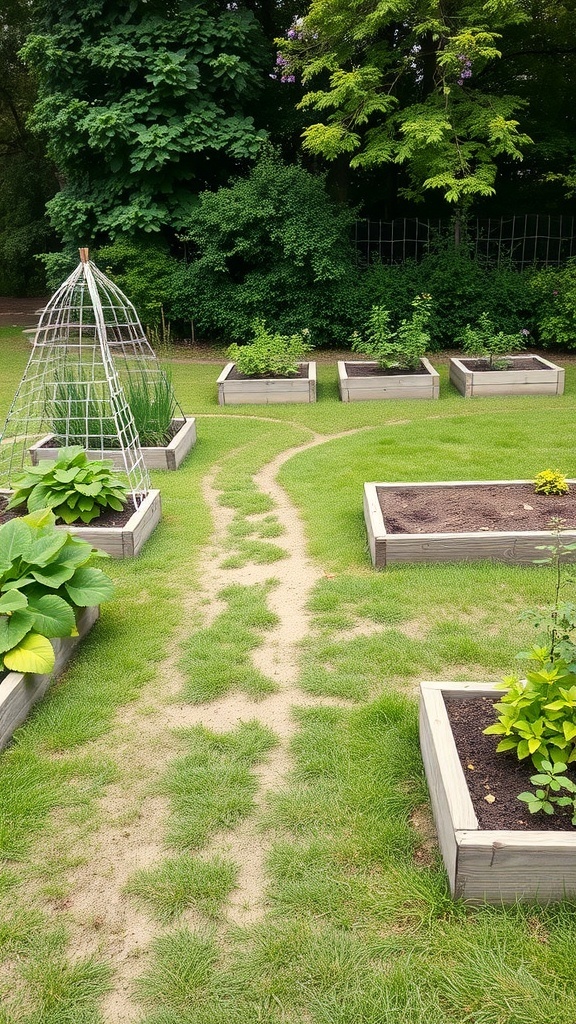
Creating a raised bed garden is a great way to enjoy gardening while ensuring accessibility. The image shows a lovely garden layout with raised beds and a clear pathway. This design makes it easy for everyone to reach the plants without bending down too much.
When planning your garden, think about the height of the raised beds. They should be tall enough for easy access but not so high that they become difficult to manage. A good height is usually around 24 to 36 inches. This allows people to tend to the plants comfortably.
The pathway between the beds is also important. A wide, clear path helps people move around easily, whether they are using a wheelchair or just need extra space. The image shows a well-defined path that invites you to explore the garden.
Consider adding some seating nearby. A bench or chair can provide a resting spot for those who may need a break while gardening. This makes the space more inviting and functional for everyone.
Lastly, think about the types of plants you want to grow. Opt for a mix of flowers and vegetables that are easy to care for. This way, your garden remains enjoyable and accessible for all gardeners.
Materials for Building Raised Beds
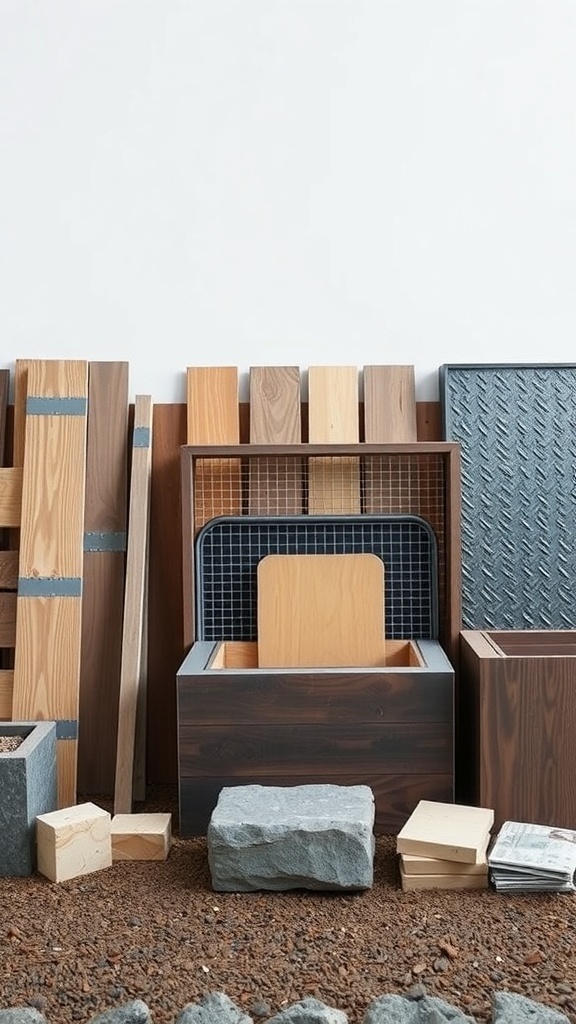
When it comes to building raised beds, choosing the right materials is key. The image shows a variety of materials that can be used, including wooden planks, stones, and metal sheets. Each material has its own benefits and can add a unique touch to your garden.
Wood is a popular choice for raised beds. It’s easy to work with and can be cut to any size you need. Look for untreated wood to avoid chemicals leaching into the soil. The different shades of wood in the image highlight how you can mix and match for a stylish look.
Stones are another great option. They provide durability and can help retain heat for your plants. The gray stones in the image can be used as a base or even as a decorative border. They add a natural feel to your garden.
Metal sheets, like the one shown, are also a solid choice. They can withstand the elements and give your garden a modern vibe. Just be cautious with heat; metal can get hot in the sun.
Lastly, consider using recycled materials. Old pallets or bricks can be repurposed into beautiful raised beds. This not only saves money but also helps the environment.
Enhancing Aesthetics with Decorative Elements
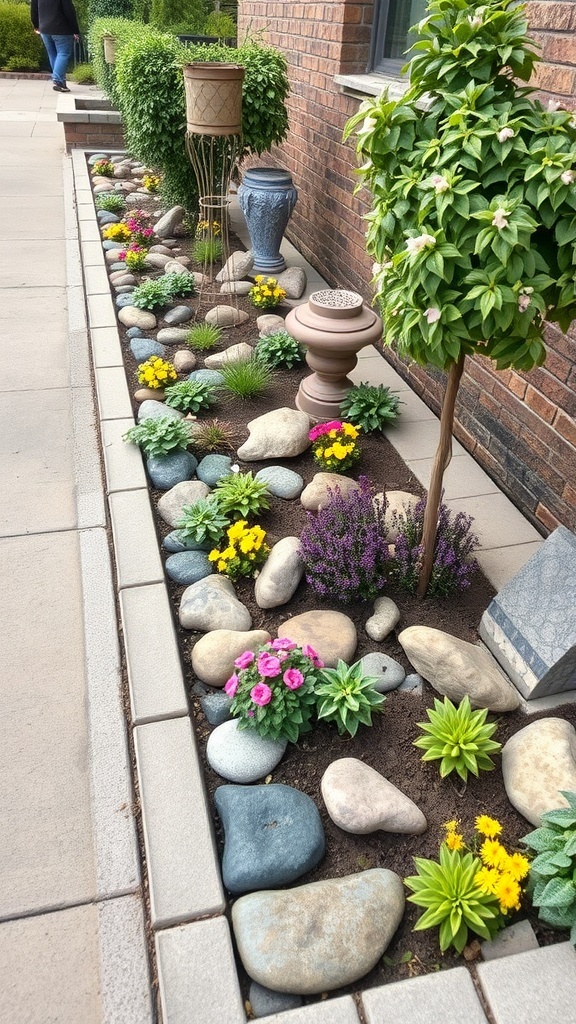
Creating a raised bed garden is not just about growing plants; it’s also about making your outdoor space visually appealing. The image shows a well-designed garden area with a variety of colorful flowers and decorative stones. This combination adds charm and personality to the space.
The use of decorative elements like rocks and planters can really make a difference. In the image, the smooth stones create a natural border, while the vibrant flowers bring life and color. This mix of textures and colors can transform a simple garden into a stunning focal point.
Incorporating items like garden statues or unique planters can also enhance the overall look. The tall planter in the image draws the eye upward, adding height and interest. These small touches can reflect your style and make the garden feel more inviting.
Don’t forget about the layout! Arranging plants and decorative elements thoughtfully can create a harmonious flow. The garden in the image shows how careful placement can lead to a balanced and attractive design. Whether you prefer a modern look or a more rustic feel, decorative elements can help you achieve your vision.
Seasonal Planting Strategies for Raised Beds
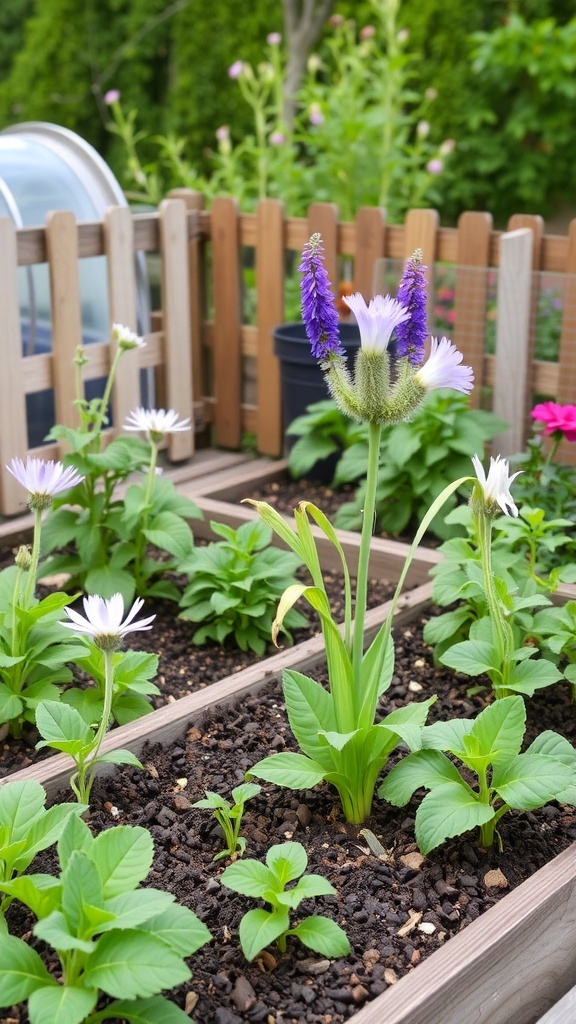
Raised bed gardens are a fantastic way to grow a variety of plants throughout the seasons. The image shows a well-organized raised bed with a planting schedule displayed prominently. This schedule helps gardeners know what to plant and when, ensuring a bountiful harvest.
In spring, you can start with cool-weather crops like lettuce and peas. These plants thrive in the cooler temperatures and can be planted early in the season. The image suggests planting these on specific days, which helps in planning your garden effectively.
As the weather warms up, you can transition to summer crops such as tomatoes and peppers. The planting calendar in the image provides a clear timeline for when to sow these seeds. Following this schedule can lead to a more productive garden.
In the fall, consider planting hardy vegetables like kale and carrots. These crops can withstand cooler temperatures and even frost. The image emphasizes the importance of timing, showing that proper planning leads to better results.
Using a raised bed allows for better soil management and drainage, which is essential for healthy plants. The visual layout in the image not only serves as a guide but also adds a nice touch to your gardening space.
